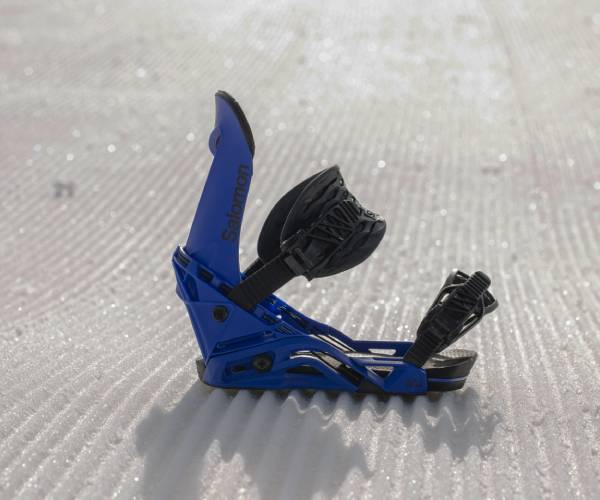
May 31, 2022
How to choose a snowboard binding
Snowboard bindings are those very important components that connect your board and your body, the driving force of your snowboard set-up. Having the right connection can help progression, comfort, and ultimately bring more fun to your time on the mountain. The right binding should match your riding style, compliment your own board and boots, and feel comfortable.

Binding Flex and Riding Style
When you’re choosing a binding, the most important thing is finding one that matches your riding style and gives you the flex or response you need. These things often go hand-in-hand, but there are some exceptions. Stiffer snowboard bindings are normally for freeriding, medium-flexing bindings for all-mountain riding, and softer-flexing bindings for freestyle and beginner riders. Think about what type of riding you do or want to do, and choose a binding based on that. Here are a few types of riding styles and how bindings work with them:
- Freeride Bindings (STIFF) – Freeride bindings have a stiffer flex and are designed to be more responsive. With a stiffer flex, the binding reacts to your body’s movements and commands quickly and easily with more power. This is helpful if you ride aggressive terrain and need to make quick, powerful transitions and movements on your board. Stiffer-flexing bindings are typically built with strong, lightweight materials to add more value for riders looking to hike for their turns.
- All-Mountain Bindings (MEDIUM) – All-mountain bindings are bindings with a medium flex, giving you versatility for a variety riding styles and terrain, from park jumps to powder fields. A mid flex gives you a great balance of responsiveness and forgiveness.
- Freestyle Bindings (SOFT) – Freestyle bindings are designed to have a softer, more forgiving flex rating. They’re designed this way so that the rider can tweak maneuvers without completely changing the movement of their board. Softer bindings are also more forgiving. Because of the softer flex, the communication between your body’s movements and your board isn’t as quick and precise, so you get a wider margin of error.
These riding styles are just a guide – there are exceptions to these riding styles. For example, some freestyle riders use an all-mountain binding for added response on big features and larger jumps. And some freeriders prefer a softer binding for a surf-like sensation in powder.
Men’s snowboard Bindings | Men’s snowboards | Men Snowboard Boots
Extra Features
Just like any other snowboard gear, extra features set certain products apart and can elevate your riding style even more. There are endless binding options and features, so we’ll stick to the most important features that can help boost your comfort level, convenience, and riding abilities.
Comfort
- Dampening and shock absorption – Typically, dampening and shock absorption options are found right under your feet. Think of it like a custom footbed for your shoes. These dampening systems can absorb shocks from hard-pack snow, high impact landings, and long days of riding.
- Canted footbeds – Canting means the footbed is built with the outside of the feet slightly more raised than the inside, like a wedge. This helps align your joints and can provide better comfort, and even better tip to tail response in some cases.
- Other – There are lots of bindings on the market that use changes in the binding tray to give you better comfort and rideability, like our ShadowFit bindings. ShadowFit bindings give you a natural connection using a unique, soft heelcup that allow your boot and binding to work together, reducing pressure points and creating a secure fit.
Convenience
-
Toolless adjustments – Most bindings have adjustments in the straps, tray, and highback to let you customize your fit. Having a binding with toolless adjustments can save time and give you a quick and easy way to adjust your binding as it breaks in. Because snowboard bindings absorb vibration, regularly checking the tension on these screws is a great way to make sure you don’t lose parts.
Women’s snowboard Bindings | Women’s snowboards | Women Snowboard Boots

Sizing
Having the right boot-to-binding fit is critical to your riding. If your binding is too small, the straps won’t fit right over your toes and ankles. Also, your toes and heels will probably hang off the binding. Both of these problems make riding more uncomfortable. Now if your binding is too big, you won’t be able to tighten your straps enough and your boot will move around in the binding. When you have the right fit, the strap sits evenly across the boot, spreading pressure equally across the ankle and toes. Your heel should fit snugly in the highback and your heels and toes should hang equally off the footbed.
Most manufacturers have a sizing chart for their bindings. Check out their chart to see the size that fits your snowboard boot best.